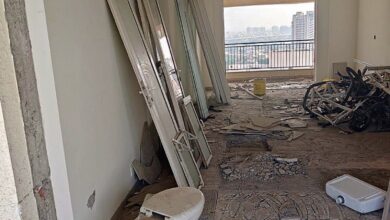The ‘Red Review’ by Home Minister Amit Shah is influencing the attack on Maoists, as shown by the 75 deaths in 4 months
Union Home Minister Amit Shah informed senior officials of the security grid-intelligence collection in January of this year at a security review meeting in Chhattisgarh that all stakeholders needed to immediately set up a thorough blueprint for anti-Maoist operations. He granted the security grid three years to eradicate the Maoists from the last remaining areas of Chhattisgarh.

After four months, the Border Security Force (BSF) executed 29 Maoists in Kanker on Tuesday after turning a particular intelligence feed into useful information. Shankar Rao, who was eligible for a prize of Rs 25 lakh, and Lalitha were among those dismissed. According to preliminary estimates, company 4 of battalion 1 of the People’s Liberation Guerrilla Army (PLGA) may have been completely destroyed or rendered unable. This is the largest number of Maoists killed in a single operation.
The fact that there were no military casualties thanks to the BSF and Chhatisgarh Police’s District Reserve Guard (DRG) coordinated operations makes the operation even more noteworthy.
PRIORITIES FOR INTELLIGENT COLLECTION
“These days, intelligence collection is a priority. “Tip-offs are coming more frequently than before as more camps open and forces enter the previously unexplored jungles,” a senior Ministry of Home Affairs (MHA) official told CNN-News18.
Shah’s orders quickly resulted in the creation of a powerful committee, whose members included the State Director General of Police (DGP), the Director Generals (DG) of the BSF, the Indo-Tibetan Border Police (ITBP), the Intelligence Bureau (IB), and other anti-Maoist grid officers. The Home Secretary examined how this committee operated, noting deadlines, responsibilities, and operational objectives that were updated in real time.
According to a CRPF officer who spoke with News18, “the coordination between the state and central forces has improved now.” He went on to say that the anti-Maoist operations have received new momentum as a result of the Union Home Minister and State Chief Minister regularly checking the goals that have been established.
According to information obtained by News18, Union Home Secretary Ajay Bhalla and Director IB Tapan Deka met with the anti-Maoist grid for a second review meeting before to the Lok Sabha elections. During this meeting, intelligence collecting was specifically discussed.
Shah also emphasized the need of operationalizing verified inputs and reviewing all inputs supplied via the IB’s multi-agency center. The measures’ implementation paid off on April 16 in Kanker and April 2 in Bijapur, when 13 Maoists from PLGA second company were slain.
NEW CAMPS: In the Sukma-Bijapur region, the central army have established 20 camps between December 2023 and April 2024. Five ITBP camps have been taken over by the BSF, while three additional ones have been established in Kanker. According to authorities, this has reduced the operational hazards for groups that often walk and are targeted by snipers and improvised explosive devices (IEDs). “The distance of operations has significantly decreased with the opening of camps in Maoist territory.” We now walk 20 miles less than before. This reduces the danger and speeds up the start of activities,” a Raipur police officer said.
According to official estimates, the Maoist domain in Bastar is now confined to a 20 km × 20 km region that includes western Sukma and southern Bijapur. In addition to reducing the Maoists’ operating area, camps in hardline regions like Puvarti and Elmagunda have shut off their customary escape routes, according to authorities. The hamlet of Battalion 1’s feared Maoist leader, Hidma, is called Puvarti.
A CARROT AND A STICK
The state administration was ordered to fill the development gaps while the Home Minister instructed the troops to step up operations. “To ensure the benefits of these schemes in villages in nearby areas, the Union Home Minister emphasized the need for saturation coverage of Central and State government schemes in districts affected by left-wing Wing Extremism and the use of security force camps.” He said that in the areas of Chhattisgarh that are severely hit by LWE, the MHA should be flexible in both the distribution of money and their use. A representative for the MHA said that “he also emphasized the need for prompt and considerate handling of all local grievances pertaining to legitimate entitlements.”
Additionally, instructions were provided to guarantee prompt inquiry and prosecution in Maoist-related offenses. According to authorities, Shah gave the State Police instructions in his review meeting to seal any lingering security vulnerabilities, guarantee thorough investigations, keep a close eye on prosecution, cut off funding sources, and carry out intelligence-led operations.
75 MAOISTS FELL OUT
With the Kanker incident, 75 Maoists have been slain this year. Twenty-two Maoists lost their lives in 2023. During anti-Maoist operations in 2023, India lost thirty police officers; so far this year, just seven have died.
A senior MHA official said, “Specific steps have been taken to minimise casualties.” Deep penetration of camps makes it possible to spend the night in the woods without running the danger of being ambushed after dusk. The enforcement of proper sanitization and mine and IED detection has improved, the officer said.
Comparative data indicates that the security grid may exceed the entire number of Maoist deaths over the previous five years in 2024. Eighty Maoists were removed in 2019. By 2024, the number is probably going to be higher. In 2022, thirty Maoists were slain; in 2021, forty-six.
Although Shah has given himself three years to eradicate naxalism, senior paramilitary sources told News18 that 2024 may be a turning point in India’s anti-Maoist efforts.







